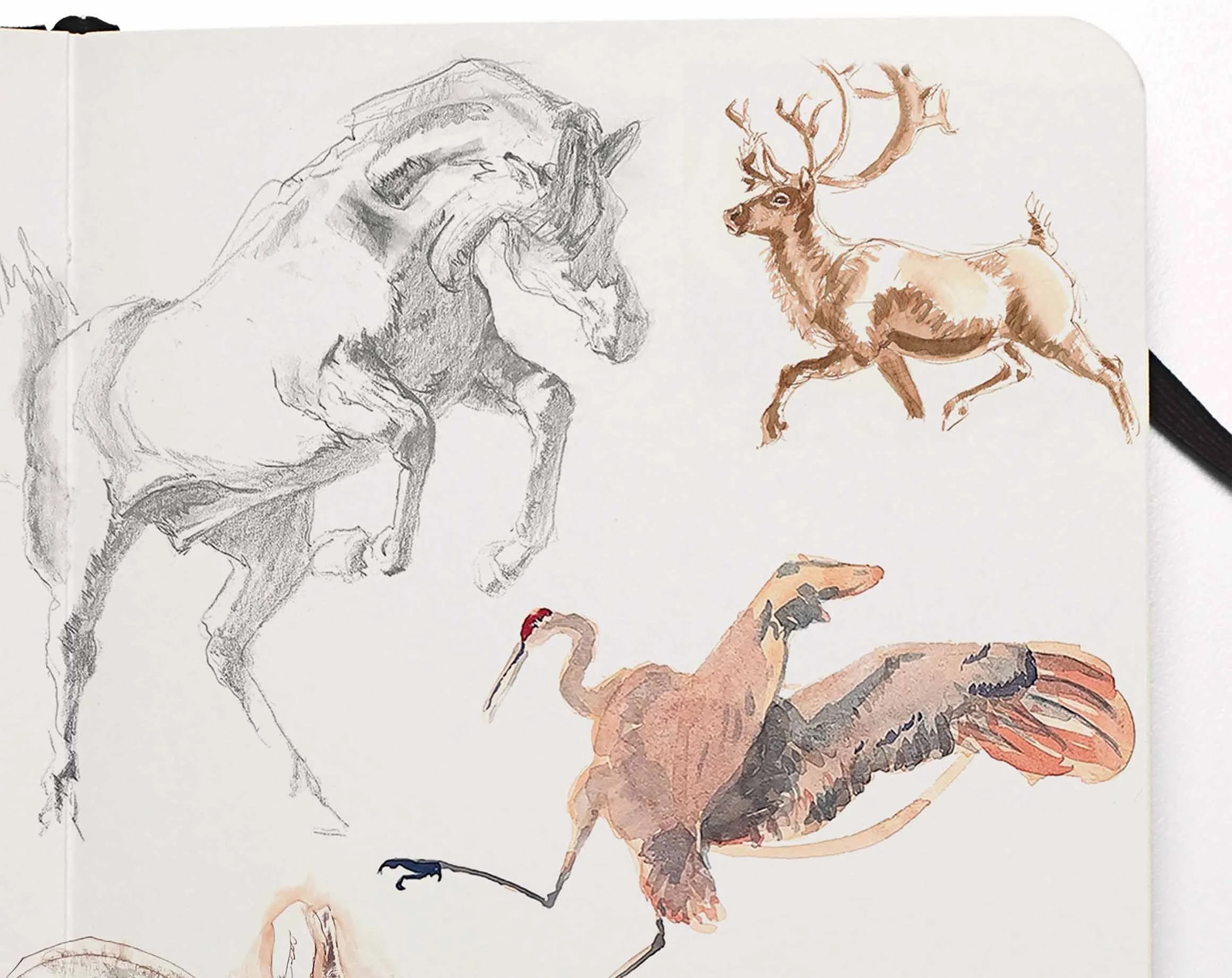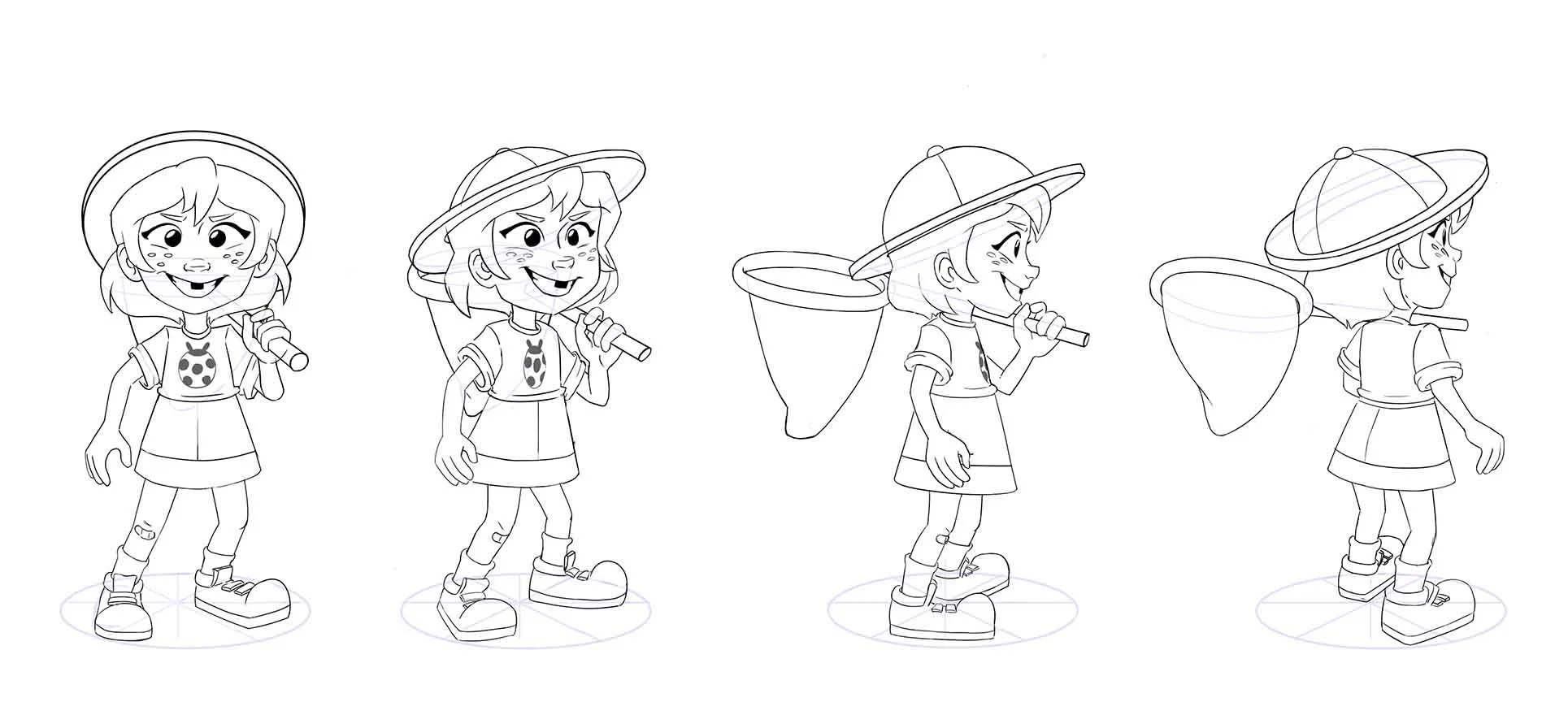How Parents Can Support Their Kids In Studying Animation
I recently wrapped up my 10th year teaching my Animation Portfolio Summer Camp with PortPrep, in Guelph, Ontario, Canada. Every year, we have a particular finale, a closing ceremonies of sorts for the intensive week of drawing and design that our late-teens just experienced. The parents who are the most keen on their kids being accepted in art school (read: College or University Animation or Illustration programs) inevitably come up to me after my presentation and say, “I really don’t know anything about animation, or what it takes to get accepted into an animation program, so how can I support my Steven, Lilly, Alia, Connor… etc!”
This, like many questions pertaining to getting a proper education in the arts, opens up a conversation that I find difficult to simplify to just a few pieces of advice, but I’m writing this blog post to attempt it anyway. For the past 12-13 years, after observing students who are in the same place I was before I was accepted at Sheridan’s animation program, I can say there are some concrete pillars of support that parents or community can provide.
Sketchbook close up of past student, Juan Carlos | Instagram
The two biggest areas that determine a student’s success are the same that students are probably so tired of hearing. Many artists tell students to simply “practice, practice, practice”. Hopefully, the following will be more useful and precise than that.
In reality, my two biggest determinants of success in students are:
time management
consistency
Honestly, who doesn’t need to improve in these two areas? They are the continual strivings of a lifetime. While we may be excellent in time management and consistency vis-a-vis checking our phones on a regular basis, I wouldn’t say that same for anything requiring rigorous, long-term work, however interesting the work or subject may be. In fact, I feel that technology has contributed to training us out of the habit of both long term work and the craftsmanship required to excel at something like animation.
So, how do you help your kids to reverse engineer their bad habits? Here are some ideas:
Make a study plan that uses a variety of strategies to be effective, i.e. it has very specific milestones (every other week), and breaks down larger projects into smaller bite-sized pieces so it is more attainable. It has particular check-in sessions with you or a trusted friend where your child can reflect on how things are going honestly, without guilt or regret, but with the opportunity for recalibration of the study plan. This last part I mention because I write weekly study plans for students who are enrolled in Personal Mentorships, and I’ve learned to write only 2-3 weeks ahead at a time, in order to A) not overwhelm my students, B) leave them room to discover what works and what doesn’t, and C) allow time adjustments because more time than previously thought will often be needed for specific projects, and it’s no use forcing my students to continue when they’re still stuck on an earlier part of an assignment.
Help them do research. Watch a lot of the portfolio videos students post. There is a ton of great content out there that thoroughly analyzes the portfolio process. Tieran, one of my student tutors, created an incredibly helpful video not long ago, and then another follow up to it. He continues to post new content on helping young artists, so definitely give him a follow. I also interview as many of my successful students as I can each year, to glean their tips for making portfolios for animation. Make a habit of doing some of this research on a regular basis.
Book a single session with me to thoroughly dig into past portfolios together so we can discuss what might work for your child. Sometimes, just by being exposed to many portfolios, you’ll get a good sense of what’s expected, or what others have done that has worked. It might not require as many artistic pieces as you think.
When they’re doing well, tell them this! If they have no positively affirming words, they will run out of creativity-gas in the portfolio season, as they won’t feel they’ve made any progress. There can’t always be “so much left to do”, and on this topic…
Encourage them to have breaks, and to step away from their work, especially if it becomes obsessive. I generally encourage screen-breaks. Reading a book is a perfect thing to do to recharge their creative engines. Good novels will help them imagine different places, characters, and entire worlds, and this is incredibly helpful mental work for an aspiring animator. Other great breaks include being in nature, exercising, and making good meals (notice parents, that all of these breaks will also help them when they’re in College or University! You’re welcome!). I learned how beneficial many of these breaks were in College as I found being healthy was critical to my long-term success in College. There tends to be a culture of overwork and bad-health among so many students, which is a terrible idea that exacerbates bad habits in workplaces later on, a vicious cycle that many animation employees are only now beginning to call out.
If they are getting overwhelmed, either see #5 or encourage them to switch to a different part of the portfolio. Sometimes just switching gears can help to loosen up some creative energy that was trapped previously. There is such a range of different portfolio requirements that it can really feel quite different to draw a background layout rather than a character rotation, for instance.
Take them to national portfolio day in Toronto, or Sheridan College’s Open House if you’re close to these areas, and are applying to schools in these areas (as many of my students are). There might be “portfolio days” at the Colleges and Universities that your child wants to attend. If it’s possible to participate, it could also be a good experience to see the campus, where they might imagine themselves to be in the future (or not).
Bring them to life drawing classes if there are any nearby. While these classes continue to be fairly rare, you might find a life drawing class local to you. If you can make time to bring them to life drawing (or even try it yourself!) it will be very helpful. I didn’t attend nearly enough life drawing, so I had very little guidance, prior to applying to Sheridan for the first time.
Attend our in-person Animation Portfolio Summer Camp, or my longer Virtual Animation Summer Camp online to meet some future peers in animation, and to get a sense of what it might feel like to work in the animation industry broadly (not just as an “animator”).
If you’re really feeling stuck, book a free call with me, or a free portfolio feedback session — you may both attend these calls, so come with all of your questions and concerns.
Character rotation past student Frida Martin-Spisak
All of these methods of support come back to the essential idea of time management and consistency in one way or another. My students who seem to have the easiest time with their portfolios also started the earliest, and consistently produced work, whether it be exercise-based work like drawing, or project-based work like the perspective layouts, over a long period of time. It isn’t absolutely impossible to be accepted on your first application — I see it every year! I hope this guide will help the parents out there who don’t know where to begin.



